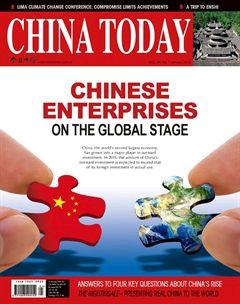Sci-Tech

China Produces First Space-based 3D Printing Machine
Scientists from China Aerospace Science and Technology Corporation(CASTC) have produced a 3D printing machine, which astronauts can use while on space missions, the first of its kind in China. The machine, which uses both long-wave fiber and short-wave carbon dioxide lasers, can produce items less than 250 millimeters in breadth, using stainless steel, titanium alloy and nickel-based superalloy. It is capable of printing complex mechanical parts, including optical lens brackets used in spaceborne equipment, components used in nuclear power testing equipment, impellers for aircraft research and special-shaped gears for car engines, said Wang Lianfeng, a senior engineer with CASTC Shanghais research arm. “Diversified in models, complicated in structures and small in production, unique features of aerospace products promise a broad application prospect for the 3D printing machine. Meanwhile, the products made will have to be tested thoroughly, due to the strict quality requirements of aerospace products,” Wang said.
Tianhe-2 Still Worlds Fastest Supercomputer
For the fourth consecutive time, the Tianhe-2, developed by Chinas National University of Defense Technology, has retained its spot as the worlds fastest supercomputer, according to a biannual Top 500 list of supercomputers released at the end of 2014. Tianhe-2 can operate at 33.86 petaflops per second (Pflop/ s). The new top 10 list had only one new addition: a 3.57 Pflop/ s Cray Storm system installed by the U.S. government. In terms of total systems, the United States remains the top country with 231, but this number is down from 233 in June 2014 and 265 on the November 2013 list. China is still No. 2 in supercomputer use, ahead of Japan, Britain, France and Germany. As an important foundation for national scientific research, supercomputers play a pivotal role in the study of such scientific fields as geological prospecting, meteorological research and oil exploration.
Kekexili Applies for World Heritage
Chinas remote western Kekexili Nature Reserve has submitted an application to be recognized as a world natural heritage site. The country currently has 47 sites on world heritage lists, none of which is in Qinghai Province. The province selected Kekexili from a number of candidates including the Kunlun Mountains, Qinghai Lake, the Qaidam Basin and Sanjiangyuan – “source of three rivers.” Kekexili, also known as Hoh Xil, is a 45,000 square kilometer reserve that encompasses Chinas largest area of uninhabited land. It is home to several endangered species, including the Tibetan antelope. Qinghai plans to complete all preparatory work for the application by May 2017.
Chinas Rockets to Use Pollution-free Propellants
Along with the evolution of aerospace industry, carrier rockets are upgrading. Chinas next generation carrier rockets using non-polluting propellants may soar as early as 2015. The rockets, fueled by liquid oxygen and diesel as well as liquid oxygen and liquid hydrogen, will make their maiden flights within the next two years, said Lei Fanpei, chairman of the China Aerospace Science and Technology Corporation. The upgraded rockets will have doubled carrying capacity. The next generation rockets will include the heavy Long March-5 and the smaller Long March-7. It will take about 15 years for a total upgrade.

